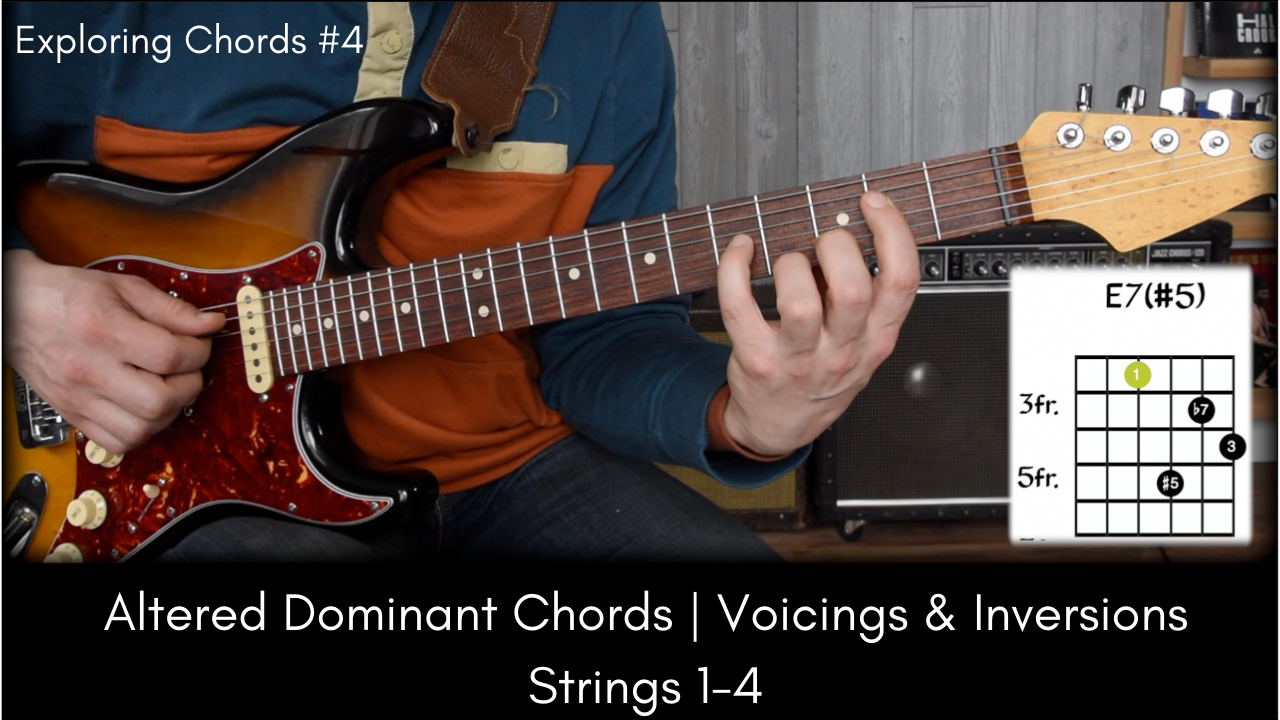Welcome to the 4th installment of my series entitled “Exploring Chords”. In this installment I’m covering Altered Dominant Chords & Inversions.
In the world of 7th chords, the altered dominant chord has a special role that is very malleable. In this lesson I demonstrate Altered Dominant Chords & their Inversions on strings 1-4. Typically used as a V chord, you can resolve altered chords to either major or minor, though the sound of an altered dominant would more naturally pair with a minor resolution.
However, as with anything in music, the rules are loose guidelines rather than steadfast “rules”. Once you understand why something is a certain way, you can break the rules any way you like.
I see altered dominant chords pop up primarily in a few places. Most typically as a way to lead into a minor chord, but it is also common when there is a key change or modulation coming. For modulations, using altered chords works very well because it has such a strong dissonance in the chord that it can center your ears on the new key. This prepares your ears to hear the new key.
There are two scales that I think of when I’m looking at Altered Dominant Chords & Inversions. The first is the “Altered Scale” which is also known as “Super Locrian” and is the 7th mode of melodic minor. The second scale I think of is the “Half-Whole” diminished scale.
The Altered Scale gives us 7th chords like #5 and b5, and also #9 and b9 that can be paired with the altered 5th (whether flat or sharp, since both notes are in the altered scale).
The Diminished Scale (half whole version) gives us dominant #9 and b9 chords with the possibility of a natural 5, and a natural 6 or 13. This is where we’d see a chord like Domanant 13(b9).
These versions of the dominant chord are very tense, and thus need to be understood in the ways that they can resolve. In this lesson I resolve each version of the Altered Dominant chord to a type of A chord, the first half of the lesson resolving to the A major and the second half to A minor. There are other ways that these can resolve, but to get you started on working with these I wanted to give just these two ways of resolving. In both cases the Altered dominant chord is acting as a V chord in the key.

lecon tres interessante